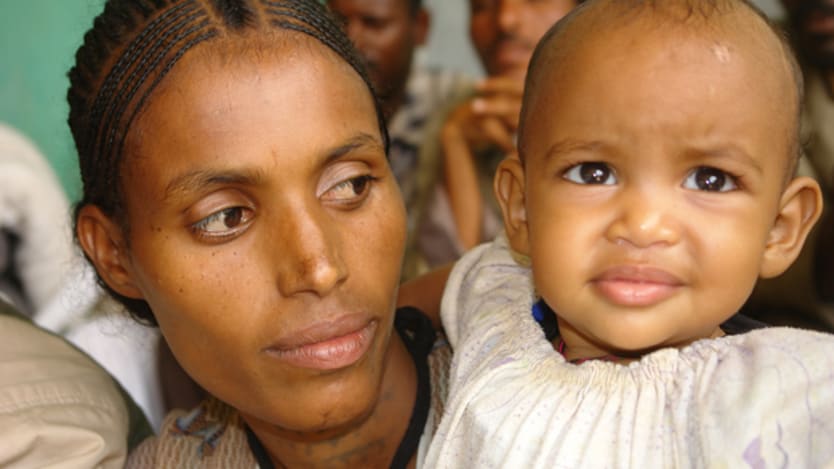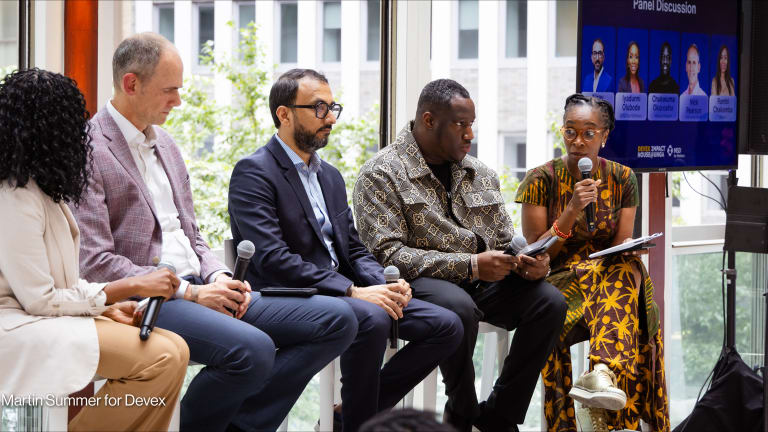
As the Millennium Development Goals mandate comes to a close in little more than 500 days, the development community is focused on two questions: were the MDGs a success, and where do we go from here?
The easy answer could be yes, of course, the MDGs have made an unparalleled impact on development. They have rallied nations around global standards that have served as powerful benchmarks for progress, and produced tangible evidence of gains in development. Nowhere is this more evident than health, where improvements in child health, reduction in maternal mortality and progress for diseases like HIV and tuberculosis have elevated the development levels of dozens of countries and thousands of communities — reaching millions of people.
But when looking forward to the post-2015 development agenda, it’s essential to remember the MDGs were intended to be aspirations, not solutions, and any new targets we set will have a similar, potentially fallible intention. Even as they create momentum, ambitious goals can create political quagmires that frustrate progress. With this in mind, the issue is not just about setting the right standards or targets for the future, but having the right structures, people and methods in place to ensure the momentum we’ve gained isn’t lost.
This area of international development seems far less glamorous or innovative than others. After all, we’re talking about logistics, training, and coordination, rather than groundbreaking new techniques, technologies, or medicines. Yet, bottlenecks in development aren’t going to be solved just by knowing more — they’ll be solved by doing more. In public health, like in many other fields, there is an action gap rather than a knowledge gap.
Revolutionary action in international development is not just creating or discovering ideas — it’s coming up with a way to put big (and sometimes old) ideas into action on the ground in ways that will actually work. The goals themselves demonstrate this. Each of the eight targets is the result of input from countless experts and dozens of high-level officials and practitioners who collectively solidified the global development priorities for the millennium. In these goals, there is no shortage of knowledge.
However, the challenge — and what countries, organizations, and NGOs alike have been working to figure out since 2000 — is how to take these informed aspirations and make them actionable so they can produce something tangible.
This challenge has shaped my thinking on development and the direction of the work at John Snow, Inc. over the past 14 years.
Despite the scope of our projects — from engaging communities to develop their health-seeking behaviors to strengthening government health systems — few of our initiatives focus solely on meeting an MDG as an end goal. Instead, JSI is privileged to be one of the many partners that work alongside governments and NGOs as they choose their own priorities. We act as facilitators, helping them to put these priorities into action. Our goal is not to take charge of the project or to create a universal recipe for fixing problems, nor is it to achieve a target and check it off a list. Instead, we work within the context of local needs and capabilities to build a sound roadmap for sustainable development and lasting health outcomes.
For each project, this roadmap must include elements that might not be explicitly laid out in the MDGs, but are essential for making projects work to lead to meeting MDG targets. These elements will continue to be relevant post 2015.
1. Maintaining existing programs despite new priorities. When development goals are reached, it’s tempting to focus on the next big idea. While progress is important, careful maintenance and continuous improvement of existing and successful programs is essential for long-term sustainability. For example, routine services like immunizations must be maintained and continuously improved in addition to new programming, no matter what issue is at the top of the current development agenda.
2. Ensuring equitable access to health care. Whether a community is rural or urban, its residents must all have access to quality care if development is to be long-lasting and country-wide. While rural communities are often hard to reach, community health workers, a key facet of several of JSI’s major projects, are instrumental in providing even the most remote populations with care from qualified providers.
3. Supplying a consistent environment of care. When clinical sites, pharmacies, and community distributors have the life-changing medicines and products people need, entire communities gain confidence in the health care system. Keeping clinics stocked with what they need when they need it requires logistical coordination across governments, NGOs, donor agencies, and private foundations to ensure health care workers have the support they require so patients can have access to reliable health care.
4. Building strong health systems. Providing any kind of assistance in a broken health system will create an impact, but in order for the system to improve and become independent, it must be strengthened from the bottom up. This process requires careful analysis of the context to improve planning and management, inform investments in human resources, logistics, and supply systems, build sustainable partnerships, and conduct research to improve decision making and governance.
The final 500 days of the MDGs are important for evaluating the realities of the present and determining the priorities of the future.
But the truth of the goals’ effectiveness will be understood in the next 10, 20, and 50 years, not in mere days. At the community, national, regional, and international levels, we must ensure that the progress we make is sustained and the innovations we create are useful. This will require us to not only have the right priorities, but also to have the patience and intention to create plans and put them into action.
Aspirational goals are necessary for true change in development, but they are not sufficient. Only when these dreams are turned into practical action can the world look to a better, sustainable future.
Aug. 18, 2014, marks the 500-day milestone until the target date to achieve the Millennium Development Goals. Join Devex, in partnership with the United Nations Foundation, to raise awareness of the progress made through the MDGs and to rally to continue the momentum. Check out our Storify page and tweet us using #MDGmomentum.








